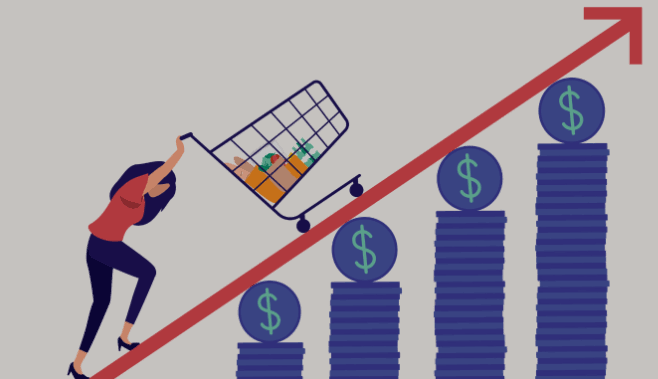Every business and household encounters additional costs that can significantly impact financial stability. While some expenses may seem minor, others can escalate into the most substantial financial burdens. But which of these additional costs will most likely be the most expensive?
This article explores some of the most financially demanding additional costs across various industries and personal finance. Whether you’re a business owner or an individual trying to manage your budget, understanding these costs can help you plan ahead and avoid financial pitfalls.
Understanding Additional Costs
Additional costs are often unexpected or underestimated expenses that arise beyond primary expenditures. For businesses, they can include labor, energy, maintenance, and compliance costs. For individuals, they might encompass healthcare, home repairs, and taxes. Failing to anticipate and manage these expenses can lead to financial strain and even debt.
The Most Expensive Additional Costs in Business
1. Labor Costs
Labor costs are among the most significant expenses for businesses worldwide. According to the U.S. Bureau of Labor Statistics, wages and salaries account for over 60% of total business costs in many industries.
Industries with the Highest Labor Costs:
- Healthcare – Hospitals and private medical practices invest heavily in skilled professionals, often making salaries their most significant expense.
- Tech Industry – Software engineers, IT consultants, and data analysts command high wages due to demand and expertise.
- Education – Universities and private schools allocate substantial funds to professors, administrative staff, and researchers.
How to Manage Labor Costs:
- Automate repetitive tasks to reduce the need for excess workforce.
- Offer competitive but reasonable salaries to attract talent while maintaining financial sustainability.
- Optimize employee benefits to ensure retention without overburdening expenses.
2. Energy Expenses
For businesses and homeowners alike, energy consumption can quickly become a costly burden. Industries that rely on continuous machinery, lighting, or climate control face especially high utility costs.
Industries Most Affected by Energy Costs:
- Manufacturing – Factories require heavy machinery that consumes vast amounts of electricity.
- Retail – Malls and supermarkets rely on constant lighting, refrigeration, and HVAC systems.
- Hospitality – Hotels and restaurants need significant power for heating, cooling, and food preservation.
How to Reduce Energy Costs:
- Switch to energy-efficient appliances and lighting.
- Utilize renewable energy sources like solar panels.
- Implement smart technology to monitor and optimize energy consumption.
3. Occupancy Costs (Rent & Mortgage)
For businesses and individuals, rent or mortgage payments can be one of the largest financial obligations. In urban areas, commercial lease rates can be astronomical, impacting profitability.
Businesses with High Rent Costs:
- Retail stores in prime locations pay a premium for foot traffic and visibility.
- Corporate offices in major cities such as New York and San Francisco face sky-high rental fees.
- Warehousing and logistics centers require substantial space, often in high-demand industrial zones.
Strategies to Lower Occupancy Costs:
- Consider remote work solutions to reduce office space requirements.
- Negotiate long-term leases for better rates.
- Choose locations with lower rent but good accessibility.
4. Regulatory and Compliance Costs
Regulatory requirements can impose significant financial burdens on businesses. Industries such as finance, healthcare, and manufacturing must adhere to strict regulations, which often require hiring compliance officers and legal experts.
Examples of Expensive Compliance Costs:
- Data protection laws (e.g., GDPR compliance) require substantial investments in cybersecurity.
- Environmental regulations demand costly updates to manufacturing processes to reduce pollution.
- Licensing fees for specific industries can amount to tens of thousands of dollars annually.
How to Manage Compliance Costs:
- Stay updated with regulatory changes to avoid hefty penalties.
- Train employees on compliance best practices to prevent violations.
- Invest in technology to automate regulatory processes and reduce errors.
The Most Expensive Additional Costs for Individuals
1. Healthcare Expenses
Medical costs are one of the largest financial burdens for individuals, especially in countries without universal healthcare. Unexpected medical emergencies, surgeries, and long-term treatments can drain savings quickly.
How to Manage Healthcare Costs:
- Invest in comprehensive health insurance.
- Utilize preventive healthcare to avoid costly medical conditions.
- Consider health savings accounts (HSAs) to set aside funds for future medical expenses.
2. Home Maintenance and Repairs
Owning a home comes with ongoing expenses that can quickly add up. Major repairs such as roof replacements, plumbing issues, and HVAC failures can cost thousands of dollars.
How to Reduce Home Maintenance Costs:
- Perform regular inspections to catch small issues before they become major problems.
- Budget for annual maintenance to prevent unexpected financial strain.
- Consider home warranty plans that cover major systems and appliances.
3. Taxes and Fees
Taxes can be a silent but overwhelming cost, especially when overlooked. Property taxes, income taxes, and unexpected penalties for late payments can drain finances.
How to Optimize Tax Payments:
- Work with a tax professional to maximize deductions.
- Keep thorough financial records to avoid fines.
- Take advantage of tax credits and incentives available in your region.
Conclusion
So, which of these additional costs will most likely be the most expensive? The answer varies depending on the industry or individual circumstances. For businesses, labor and compliance costs often top the list, while individuals may find healthcare and home maintenance to be their biggest financial burdens.
To minimize these expenses, proactive financial planning, budgeting, and strategic decision-making are essential. By identifying high-cost areas and implementing cost-saving measures, businesses and individuals can achieve financial stability and growth.
